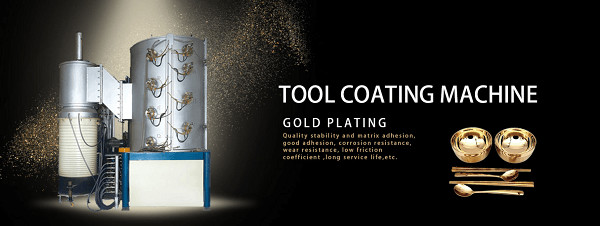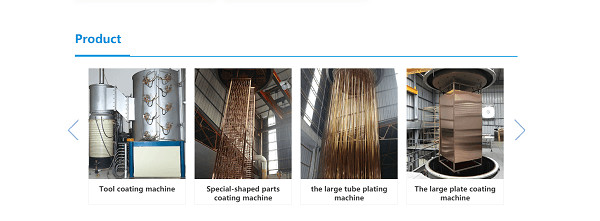Study on the resistance performance and mechanism of Cu/TiO2/ITO thin film elements
The TiO2 film and the Cu upper electrode layer were deposited by magnetron sputtering method to prepare Cu/TiO2/ITO resistive random access memory elements. The film materials were characterized by atomic force microscope, X-ray diffractometer, and X-ray photoelectron spectrometer. The test results showed that the surface of the TiO2 film was flat and dense; the structure was mainly amorphous, with only a small amount of rutile TiO2 (110) surface Crystallization; the ratio of titanium to oxygen is 1:1.92 (at%), indicating that there are a small amount of oxygen vacancies inside the film. In the resistance change performance test, the component exhibits a bipolar resistance change phenomenon, the resistance change window value is stable, and the data retention characteristics are good, but no Forming process occurs. Through the analysis of the linear fitting results of the I-V curve of the resistive variable element, it is concluded that the resistive variable machine is controlled by the conductive filament theory and the Poole-Frank effect. Further analysis found that the oxidized Cu ions can easily migrate in the TiO2 film under the action of a bias voltage and form larger and more stable conductive filaments.
Resistive random access memory has attracted much attention due to its low operating voltage, fast read and write speed, good data retention characteristics, and compatibility with complementary metal oxide semiconductor processes. It is based on the resistance of the dielectric layer film material under the action of an appropriate applied voltage, the vacuum technology network (http://www.chvacuum.com/) believes that it can achieve reversible conversion between high resistance state (HRS) and low resistance state (LRS) It is the basic working principle, and as a way of memory storage, so as to realize the storage of ‘0’ and ‘1’.
In related research, the uncertainty of the resistive switching mechanism has always been an important factor affecting the development of resistive random access memory. At present, most researches on resistive memory materials are oxide systems, among which TiO2 has been proven to have good resistive performance. The resistive memory element prepared by this research group in the experiment is Cu/TiO2/ITO, that is, the upper electrode material is Cu; the lower electrode selects the ITO material that has been widely used in resistive memory; the dielectric layer, also called the resistive layer , Is a TiO2 thin film prepared by reactive magnetron sputtering. In this paper, the resistive performance and mechanism of TiO2 film are studied, and the analysis shows that the resistive mechanism of the element is related to the theory of conductive filaments and the Poole-Frank effect, which provides a reference for solving the uncertainty of the resistive mechanism of TiO2.
1. Experiment
The Cu/TiO2/ITO resistive random access memory device obtained in the experiment conforms to the vertical sandwich structure, in which TiO2 is the resistive dielectric layer; the substrate chooses ITO conductive glass, because it can support the resistive dielectric layer as well as the bottom electrode; choose Cu as the resistive dielectric layer. Upper electrode. TiO2 film was prepared on ITO substrate by DC reactive magnetron sputtering. The process parameters are as follows: sputtering power 80W, oxygen-argon ratio 10/90 (sccm), target base distance 60 mm, working pressure 0.7 Pa, sputtering time 6 min, the background vacuum reaches 3× 10-4 Pa, and the thickness of the prepared TiO2 film is about 25 nm. A mask with micro-holes is used to control the shape of the Cu electrode. The diameter of the Cu electrode is about 0.1 mm.
The magnetron sputtering equipment used in this experiment is IMS500 ultra-high vacuum ion beam and magnetron sputtering combined coating equipment. When preparing the resistive medium layer, the target material is a metallic titanium target with a purity of 99.99%; when depositing the upper electrode, a metallic copper target with a purity of 99.95%; ionized gas Ar with a purity of 99.999%; reaction gas O2 with a purity of 99.99%. Performance testing includes thin film resistance performance and material performance testing: the resistance performance of thin film components is measured by Keithley 4200-SCS semiconductor parameter analyzer. The main performance parameters of component resistance performance include: IV characteristic curve, operating voltage, endurance, retention Characteristics and resistance switching window; the composition and valence of the film are determined by the ESCALA250 X-ray photoelectron spectrometer (XPS) from Thermo Scientific, and the crystalline state of the film is determined by the Philips X/Pert Pro MPD X-ray powder diffractometer ( XRD), the surface morphology of the film was measured using the Agilent 5500 atomic force microscope (AFM), and the thickness of the film was measured using the KLA-Tencor D-100 profiler.
vacuum coating machine,pvd coating machine,pvd vacuum machine,vacuum ion coating machine,multi-arc ion coating machine
2. Result analysis
2.1, film material properties
In order to analyze the composition and valence information of the TiO2 film prepared by the experiment, XPS was used to test the film, and the results are shown in. (a) There are two peaks in the Ti2p spectrum. The peak at a binding energy of 458.4 eV corresponds to Ti2p3/2 electrons, the peak at a binding energy of 464.1 eV corresponds to Ti2p1/2 electrons, and both peaks correspond to Ti4+; ( In b), the O1s peak is fitted by two peaks. The peak at 529.6 eV is considered to be lattice oxygen, and the peak at 530.8 eV is considered to be adsorbed oxygen. The relative content of titanium and lattice oxygen is calculated by the atomic sensitivity factor method, and the titanium-oxygen ratio of the film is 1:1.92, and the oxygen atom is slightly lower than the stoichiometric ratio. It can be inferred that there is a certain amount of oxygen vacancies inside the film. The non-stoichiometric TinO2n-1 phase (n=4 or 5, called Magnéli phase) will reduce the resistance of the film due to the formation of conductive filaments that are more stable than the rutile phase.
Study on the resistance performance and mechanism of Cu/TiO2/ITO thin film elements
Study on the resistance performance and mechanism of Cu/TiO2/ITO thin film elements
The surface morphology of the TiO2 film is shown in. It shows that the surface of the TiO2 film is granular, the particle diameter is about 15nm, the size is uniform, and there are no clusters; the film surface is flat, the structure is dense, and the surface root mean square roughness is 1.19 nm. It can be seen that the deposition quality of the TiO2 film is relatively good, and the dense and uniform structure helps to ensure the yield of the device.
vacuum coating machine,pvd coating machine,pvd vacuum machine,vacuum ion coating machine,multi-arc ion coating machine
Study on the resistance performance and mechanism of Cu/TiO2/ITO thin film elements
2.2, resistance change performance
Study on the resistance performance and mechanism of Cu/TiO2/ITO thin film elements
The distribution of the high and low resistance values of the components is shown in. The low resistance value is stable between 200Ω-300Ω, the high resistance value fluctuates slightly, distributed around 2000Ω, the high and low resistance states are clearly distinguished, meeting the information storage requirements.
In addition, the high resistance value of the first 4 cycles of the component is significantly higher than the high resistance value of other cycles. There are two different Reset curves in the connection. The reset process corresponding to the curve 2nd with a sudden current change will cause a larger high resistance value of the component, while the "non-typical" Reset process corresponding to the curve 3rd with a slow current change makes the component high The resistance is low.
2.3, derivation of resistance change mechanism
vacuum coating machine,pvd coating machine,pvd vacuum machine,vacuum ion coating machine,multi-arc ion coating machine
In order to study the resistance change mechanism, the I-V curves of the two resistance change processes are linearly fitted, and the results are shown in. For the inference of resistance switching mechanism, the analysis of oxygen vacancy effect is very important. The fitting results of curves 2nd and 4th are respectively I~V1.01 and I~V1.03, that is, the low resistance states of the two resistive switching processes conform to Ohm’s law, indicating that conductive filaments are formed in the film; the low voltage of curve 3rd The fitting results under some double logarithmic coordinates are approximately linear (I~V1.10), and there is a slight deviation in the high voltage part. The fitting results are not consistent with the resistance change mechanisms such as the SCLC effect, Schottky emission mechanism and PF effect. It is consistent; the curve 1st shows a linear relationship under the ln(I/V)-V1/2 coordinates, which conforms to the PF effect.
Study on the resistance performance and mechanism of Cu/TiO2/ITO thin film elements
Study on the resistance performance and mechanism of Cu/TiO2/ITO thin film elements
To sum up, the appearance of the resistive characteristics of the element is due to the formation and fracture of conductive filaments. In the first 4 cycles, the conduction mechanism of the high resistance state is dominated by the PF effect, while the conduction mechanism of the high resistance state in other cycles cannot use the previous mechanism temporarily. Explanation.
Previous studies have shown that the mobility of Cu in oxides is relatively high, and Cu atoms will gain a lot of kinetic energy during sputtering deposition, so Cu atoms are likely to be injected into the TiO2 film, resulting in the effectiveness of the TiO2 film resistive dielectric layer The thickness becomes thinner, and the oxidized Cu ions can easily migrate in the TiO2 film under the action of the bias voltage and form larger and more stable conductive filaments, resulting in a very low resistance value (as shown), and this It is also the reason why the component eliminates Forming; in the first 4 cycles, the conductive filament is still not stable enough, and the negative voltage scan can completely break the conductive filament, which leads to the sudden change of current during the Reset process as shown in the curve 2nd, and higher High resistance; while in the reset process of other Cycles, the conductive filaments that have been relatively stable are slowly dissolved, and the resistance value of the component gradually increases, forming a gentle reset curve, but the conductive filaments are not complete until the end Fracture, that is, there are still conductive filaments connecting the upper and lower electrodes in the film in the high-resistance state, which ultimately results in a lower resistance value in the high-resistance state and the fitting result of the IV curve is approximately 1.
3. Conclusion
vacuum coating machine,pvd coating machine,pvd vacuum machine,vacuum ion coating machine,multi-arc ion coating machine
This article uses magnetron sputtering to prepare Cu/TiO2/ITO resistive switching elements, and analyzes the possible resistance switching mechanism of the resistive switching device based on the resistance switching performance data results. Vacuum Technology Network (http://www.chvacuum.com/) It is believed that the following conclusions can be drawn:
1) The prepared TiO2 is mainly amorphous, the ratio of titanium to oxygen is 1:1.92 (at%), and there are a small amount of oxygen vacancies inside the film;
2) The resistance variable mechanism of TiO2 resistive random access memory is controlled by the conductive filament theory and the Poole-Frank effect;
3) The conductive filament is related to the redox reaction of ionized Cu ions in the film, and the ions migrate to the lower electrode to form a conductive channel;
4) Incomplete rupture of the conductive filament is likely to show the "atypical" Reset process in which the resistance changes slowly.
Founded in 2015,Zunhua Baorui Titanium Equipment Co.,Ltd. is a manufacturer specializing in pvd vacuum ion coating equipment. The company’s products mainly include large plate coating machine, large tube collating machine, tool coating machine and LOW-E glass production line. Mr.Wang baijiang ,general manager of the company ,has been engaged in vacuum coating industry for more than 30 years. He continuously improve production technology, improve product performance and devote himself to provide customers with better product experience and higher production efficiency.





